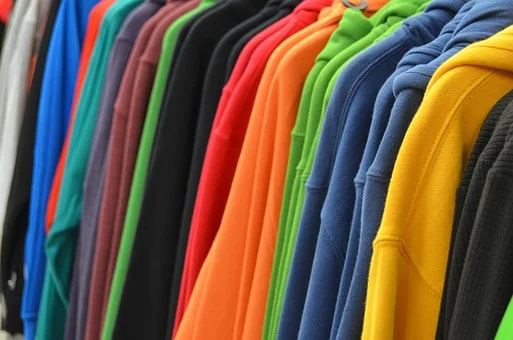The Sustainability Dilemma

February 15, 2022
Fashion is classist, sustainability is classist. A statement that becomes more and more relevant as the fashion industry is colored by the internet, micro-trends, and consumerism. The fashion industry is the third largest polluting industry in the world. This is not new news, with over consumption from consumers and exceptional amounts of waste from clothing production plaguing the environment. American society is accustomed to the ease and convenience of having an abundance of clothing at our fingertips. Whether it’s online or in store, America is never at a loss.
It is an ineffable fact that the general public cannot solve this problem solely on it’s own, as is the case with any systemic issues, but looking at over consumption is a way to spark the sustainability debate. Websites such as SHEIN, Fashion Nova, and ASOS have cornered the market on online fast fashion. With a timeline from design to production to being listed on their website as low as 3 days, companies such as these fuel over consumption in America. Tik Tok has popularized massive SHEIN hauls of hundreds of items, items that are made without disclosure of workers being paid a living wage, with little effort to reduce its immense greenhouse gas emissions. And SHEIN is not the only brand encouraging the cycle of scouring the internet for micro-trends that will sell for practically nothing.If you have money, what better to spend it on than a ton of trendy, inexpensive clothing.
So how is fashion classist? New clothing can come at heavy costs, even when they’re made with cheap material and by laborers paid next to nothing. Lower income consumers are limited to lower quality fast fashion or second hand clothing. Fast fashion was made to be accessible and affordable, and it is, however in 2021 it comes with a unconscionable cost. The market for fast fashion is growing exponentially and will continue to, according to PR Newswire, the fast fashion portion of the industry is expected to grow over 19% from 2020 to 2025. A large part of this rapid growth is the shortening of the trend cycle. In the past, fashion has had two seasons, fall-winter and spring- summer; this has dictated how long trends last for and how people dress for the appropriate season. With this system, clothing could go a lot farther in people’s closets and trends stayed in fashion for longer. In the current age of the internet there are dozens of trend cycles, straying from the two season cycle of the past and producing micro-trends which are a flash in the pan comparatively. Fashion can’t go as far as it used to, so buying new, quality clothing that is in style can only last for so long. Consequently causing lower income consumers to turn to fast fashions.
The new wave of fashion sustainability is coming in the form of thrifting. Whether it’s at your local Goodwill or on Depop, the generational awareness of sustainability is pushing in the era of thrift shopping. The widespread popularity of thrift stores in America has led to an inexpensive and accessible way to recycle and buy clothing especially for poorer demographics. But as clothing gets more and more expensive and people are starting to realize the negative effects of buying new clothes, thrifting has become the go-to.
Thrifting is a fantastic way to lessen your carbon footprint, find interesting pieces, and save some money. It has made fashion more accessible to masses of people that many companies don’t cater towards and gives life to old clothes that aren’t wanted. Thrifting has so many benefits understated by the positive environmental impact buying second hand brings. However, as more and more people turn to thrifting, it disadvantages the demographic thrift stores cater to in the first place. Online marketplaces namely Depop have revolutionized online seller- buyer shopping. On Depop, sellers will mark up the prices on thrifted items in order to profit, but this leads to items being marketed as “vintage” and then marked up at 5 times the buying price. This is generally how all reselling works, but as sellers exploit thrift stores to profit off them again, it raises the prices of current thrift stores. Upper middle class people will buy tons of items, or “hauls” in order to resell even when they themselves can afford new items. Low income shoppers have been forced out of their thrift stores due to price increases that come at the hands of the upper class “ haulers”.
In this country the fashion industry is catered towards mass consumerism, excluding lower income communities. The rise of thrifting and over consumption by the upper middle class have given way to an increase in the price and a decrease in the accessibility of affordable, fashionable, and high quality clothing. This disproportionately affects lower income groups and leads to more clothing waste. However it’s looked at, the fashion industry has tons to clean up, and affordability and accessibility of clothing should be high on the list.


Stephanie • Feb 15, 2022 at 10:43 pm
Thank you Ruby for excellent informative look at the clothing industry… hope it jars some minds of the fashionistas of what it’s doing to our world
“Save the world … we may need it later “